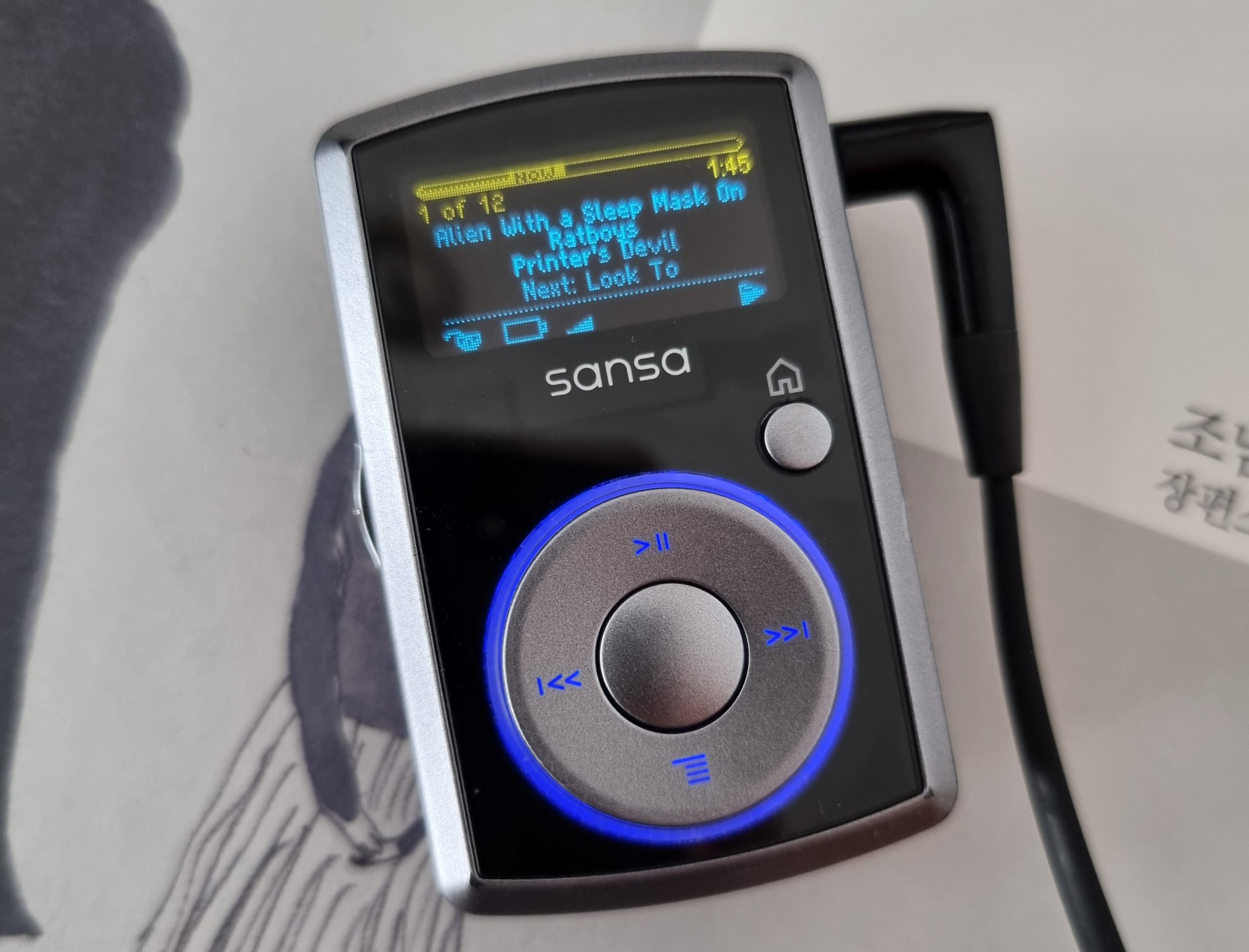New old device
On a recent visit home, I dug this 2007 Sansa Clip out of a box.

It’s battery life is shot, but everything works, and I unearthed some critical throwback jams from the built-in 4GB of flash memory (among other things, the first four Brad Paisley albums in .wma format). As the picture shows, I also installed a bit of custom firmware called Rockbox.
I remembered Rockbox from using it on a different MP3 player (a Sansa e200) prior to the Clip. It runs on dozens of classic ’00s devices (including some of the early iPods) and provides a wide range of features and customization options beyond the stock firmware—things like support for the FLAC audio format, a dynamic equalizer, and better tools for managing playlist and the “now playing” queue. There are additional plugins for games, translations, font selection, and image viewing.1
Rockbox distributes an installation wizard for Linux platforms, but I couldn’t get it to work (it 404’d trying to download the fonts package2). Fortunately, the “manual” installation isn’t hard. You just download one of the official firmware updates from Sandisk, then apply Rockbox’s patch and transfer the result to the device’s root directory. By design, the Clip attempts to execute any file in the root directory whose name matches a certain pattern. This firmware update mechanism was a welcome convenience for tinkerers, but it’s probably too insecure for today’s internet-mandatory smartphones.
Playing with the Clip has renewed my excitement for the Tangara, an open-source, crowdfunded MP3 player slash nostalgia platform that aims to combine the hackability of those 2000s devices with such modern comforts as Bluetooth and USB-C. I don’t fault Tangara for writing their own firmware, but I really hope that Rockbox gets ported to it, too, as Rockbox basically defined the “handheld music player” interface for me at a formative age. Nothing else feels quite as flexible or obvious.
-
Image viewing works even on the Clip’s simple two-color display. It uses random dithering to represent fractional lightness values, and rerolls the randomness with each screen refresh to produce a nice composition effect. This kills the battery in short time. ↩
-
I wasn’t sure how best to spell 404’d, and couldn’t find the verb form in any of the dictionaries I checked, but I settled on this spelling by comparison with a reference to 86’d in this Merriam-Webster article. The more you know. ↩